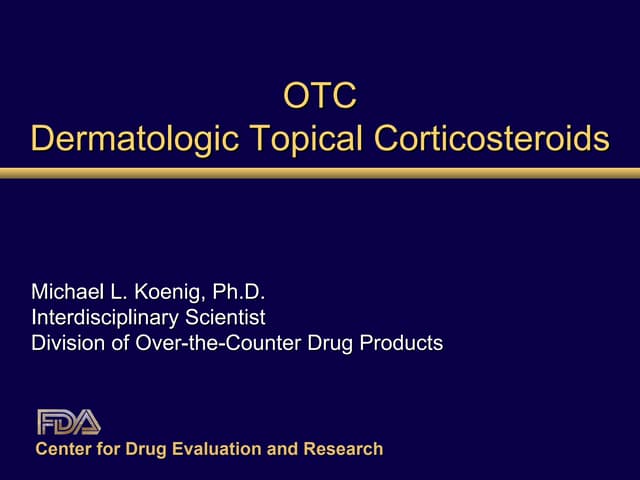
The realm of dermatology is replete with myriad conditions that besiege the skin, creating a landscape fraught with discomfort and unease. Among the arsenal of therapeutic interventions, intralesional corticosteroids stand as a beacon of hope, a solitary lighthouse guiding through turbulent seas of dermatologic despair. This method, akin to pinpoint artillery in the war against inflammatory skin disorders, serves a unique purpose for specific dermatologic problems. But which conditions benefit from such a targeted approach? Herein lies the examination of the enigmatic interplay between intralesional corticosteroids and their efficacy against distinct dermatologic malaises, elucidating their role in treating certain vexing skin afflictions.
Understanding Intralesional Corticosteroids
At the heart of this discourse lies intralesional corticosteroid therapy, an intervention that delivers anti-inflammatory agents directly into the lesion. This method is particularly adept at commandeering the body’s natural responses, modulating the excessive inflammatory processes that often characterize dermatological conditions. By administering corticosteroids in close proximity to the site of pathology, clinicians can potentiate localized effects while minimizing systemic exposure—a strategy reminiscent of a surgeon skillfully excising a tumor with precision and care.
Alopecia Areata: A Hair’s Breath from Despair
One of the primary conditions for which intralesional corticosteroids have achieved prominence is alopecia areata, an autoimmune disorder characterized by abrupt hair loss. In this condition, the immune system mistakenly targets hair follicles as foreign entities, triggering an inflammatory onslaught that leads to the cessation of hair growth. Here, intralesional corticosteroids operate as a salve, stanching the barrage of inflammation and reinvigorating the hair follicles beneath. Clinicians inject corticosteroids directly into the affected areas, stimulating hair regrowth while ameliorating the underlying inflammatory response.
In many ways, alopecia areata is akin to an ominous storm cloud wandering across an otherwise clear sky. The storm can wreak havoc and obliterate the sense of self. The timely and judicious application of intralesional corticosteroids can dispel these clouds, allowing the sun of renewed confidence to shine through once more.
Keloids: The Unwanted Guests
The realm of dermatologic afflictions also encompasses keloids, an aberration in the healing process that results in excessive scarring following injury to the skin. Keloids, which can be described as unwelcome guests at a party, exceed their designated boundaries and proliferate beyond the confines of the initial wound. Intralesional corticosteroids serve as a potent remedy for these enlarged scars, mitigating the hyperproliferative activity of fibroblasts responsible for keloid formation.
By strategically placing a corticosteroid injection into the keloidal tissue, the clinician seeks to curtail the fibrotic response and attenuate not only the size of the keloid but also its associated symptoms, such as itching and tenderness. This method is instrumental in restoring a semblance of normalcy to the skin, offering patients relief from the constraining nature of their scars.
Granuloma Annulare: A Puzzle of the Skin
Granuloma annulare represents yet another dermatologic quandary, with its characteristic rings of erythematous papules that may evoke concern for malignancy. This enigmatic condition remains largely idiopathic, yet intralesional corticosteroids can serve as a pivotal treatment modality. By infiltrating the corticosteroid into the lesions, the dermatologist aims to suppress the inflammatory process that defines the condition while fostering resolution.
In this context, granuloma annulare resembles a complex puzzle begging to be solved; intralesional corticosteroids act as the key ingredient, hastening the dismantling of inflammatory pieces and guiding the way toward restored skin integrity.
Psoriasis: Curbing the Firestorm
Although psoriasis primarily responds to systemic treatments and topical agents, intralesional corticosteroids can play a role, particularly in managing localized plaques that resist conventional approaches. Psoriasis presents as a conflagration of improperly regulated immune responses, leading to hyperproliferation of keratinocytes and the formation of psoriatic plaques. In such instances, intralesional corticosteroids act like a fire extinguisher—quickly dousing the inflammatory flames and promoting a return to homeostasis.
When injected into stubborn plaques, these corticosteroids can significantly reduce redness, scaling, and itching, offering patients much-needed relief from the discomfort of their condition.
Conclusion: The Surgical Precision of Intervention
The application of intralesional corticosteroids amidst the diverse landscape of dermatologic disorders delineates a nuanced strategy that underscores the importance of tailored therapy. By honing in on specific conditions such as alopecia areata, keloids, granuloma annulare, and psoriasis, the clinician attains a surgical precision that distinguishes intralesional corticosteroids as a vital component in the dermatological therapeutic arsenal.
In this ever-evolving field, understanding the scope and implications of intralesional corticosteroid therapy is essential for grasping not only the subtleties of skin disorders but also the profound impact that targeted interventions can have on the lives of those affected. Such treatments illuminate a path forward, where patients are not merely subjects of their conditions but active participants in their journey toward healed and revitalized skin.
